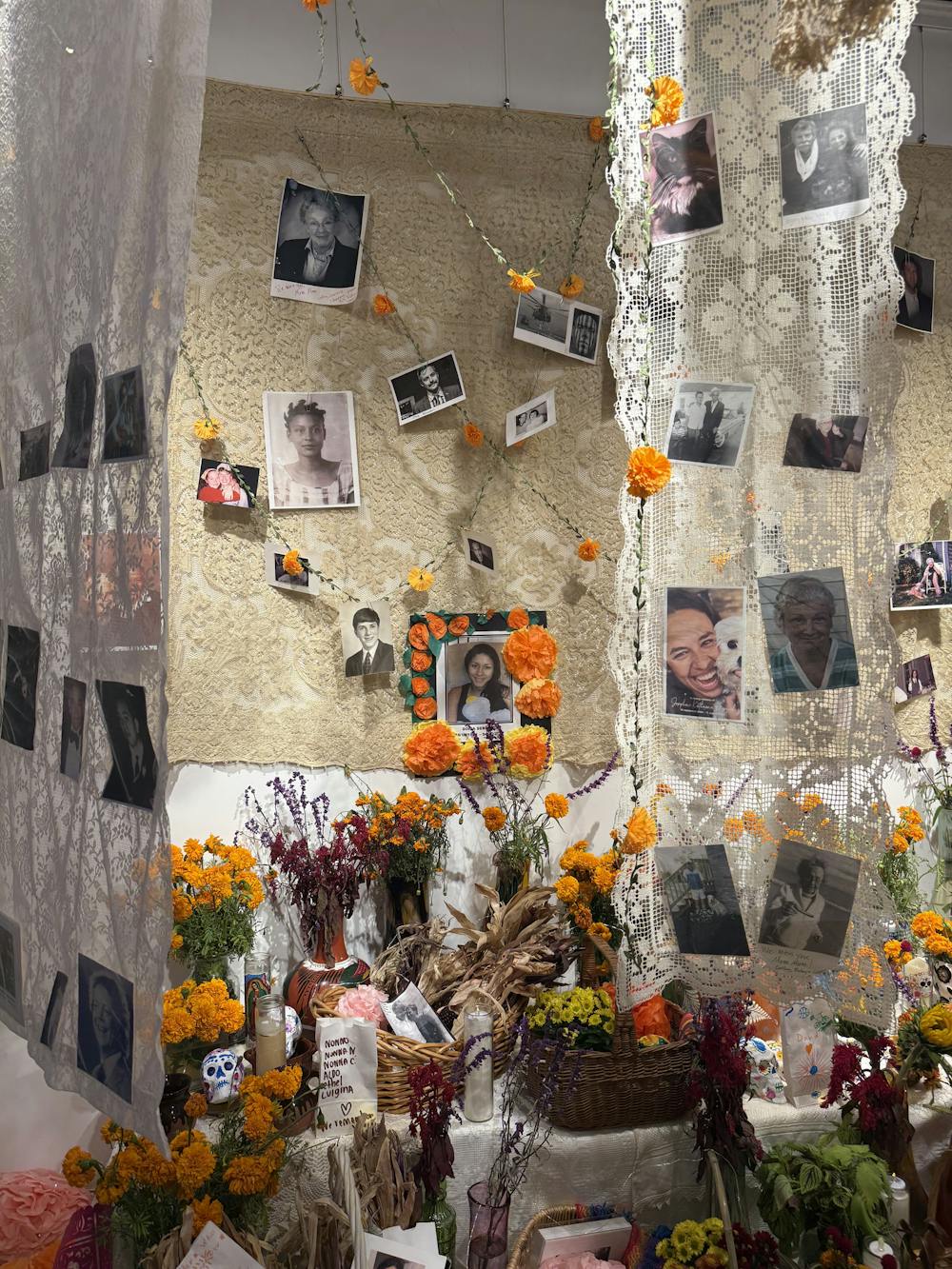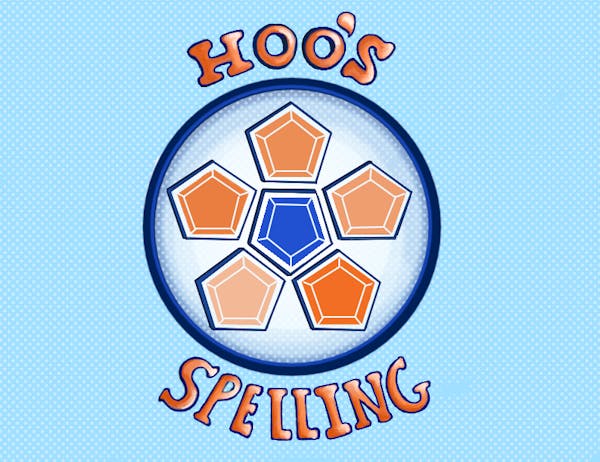The doors of downtown’s McGuffey Art Center opened to a sea of color this November, with paper flag garlands strung from the ceiling, painted skeletal masks adorning the walls and marigolds galore decorating surfaces. Walking through the first floor halls, a web of displays interspersed with saved messages of memory from past years transformed the gallery with the festive spirit of the 13-day Día de los Muertos exhibition, carefully crafted in remembrance of loved ones now passed on.
Día de los Muertos is a Mexican celebration to honor the deceased and celebrate their lives with offerings, decorations, music, dancing and time spent with family. From Nov. 4 through 16, the exhibition — which celebrated its 14th anniversary this year — offered the public a glimpse into some aspects of this rich and vibrant tradition.
Organized by the Lua Project — a local Mexilachian y Appalachiano music group seeking to bridge cultures through music — the display was made possible by the contributions of Charlottesville’s Mexican and Latine community members, who reserve spaces to honor their loved ones and spend time adorning the halls with offerings.
From humble beginnings over a decade ago, the Día de los Muertos event has grown into a beloved community staple. While originally a two-day endeavor, the McGuffey Art Center now hosts a 13-day observance to accommodate growing interest and appreciation. Estela Knott, musician and co-founder of the Lua Project as well as an organizer of the exhibition, said that the community enthusiastically embraces this cultural connection and admiration of the ofrendas, handmade altars filled with personal touches to honor loved ones.
“It first started out as just a small group of women … [who] decided we wanted to build an ofrenda as Dia De Muertos was a celebration that they missed most from their home country of Mexico,” Knott said. “We decided to invite the public out and over 200 people showed up that first year. It's just grown more and more each year.”
Alongside the established altars embellished with personal remembrances, attendees are invited to participate in their own efforts as well when visiting the exhibit. Supplied with paper bags and markers to craft their own luminaria bag, the public’s own messages of memory and notes to late loved ones line the walls between the ofrendas and create a memorial spanning the entire perimeter.
These additions to the celebration create a communal collage of commemoration, integrating the community’s personal touches with traditional decorations. This patchwork of messages are saved and spread out again each year, revealing a sense of history of the event in Charlottesville and highlighting the continuous nature of remembrance. For Knott, this interactive element of the celebration holds an especially meaningful importance.
“I love this because it puts us in touch with each of the people who share a memory with this celebration,” Knott said. “I’ve heard a number of times from people who come each year that they’ve seen bags that their loved ones who have passed have made in previous years. It’s really special.”
As the event itself has evolved over the years, so has the community network it has been able to reach. In addition to remaining open and free to the public for the duration of its residence, the exhibition features a focus on collaboration and engagement by inviting local individuals and groups to help bring the celebration to life. These involvements range from musical performers on the opening evening, such as singer Elizabeth Lainez and Xavier Vidal of the Foreign Playerz group, to representation in the memorial altars themselves.
Knott reflected on the cooperation and contribution of many supporters who left a lasting impact on this year’s decorations and altar assembly, including Fuerza Latina, Sin Barreras, Woven Roots Collective and Panorama Natural Burial among others.
“We always create a community together, so if community members would prefer to help with that, they are invited each year to do so,” Knott said.
Asst. Spanish Prof. María Esparza Rodríguez shared this opportunity with University students via email to encourage community engagement. She similarly echoed a sentiment of togetherness, saying the Día de los Muertos exhibition has added value to both her life and the local Charlottesville environment.
“[The event] is a beautiful celebration of life and an opportunity to bring the Charlottesville community together,” Esparza Rodríguez said. “It honors our loved ones but, perhaps more importantly, gives us a chance to continue building kind and loving communities and to make new friends.”
While engagement from neighbors and interested residents proves a key facet of the festivities, the deep-rooted tradition of Día de los Muertos resides with Charlottesville’s Mexican and Latine community, whose leadership and communication continues to shape the exhibit. The balance of inclusivity, education and the preservation of traditional cultural roots results in a dynamic and integrated atmosphere dedicated to an authentic representation of Latine heritage.
“At the core of it are Latine people, this is very important as we want to keep it rooted in tradition, as we evolve how it roots itself in Virginia,” Knott said. “When we make important Latine rituals and celebrations a rooted communal experience in our community … it helps young people value them as well and encourages integrat[ion] rather than assimila[tion].”
Knott, whose Mexican heritage has played a major role in her artistic expression as a presenter and performer, said that her experience of Día de los Muertos has transformed her perspective on loss. She explained how the holiday has provided a sense of comfort and community during hard times.
“It has given us the understanding that life isn't an end, it's a doorway. That death is a part of life and with this celebration we live on in the memories and in all of the lives that we touched along the way,” Knott said.
In inviting Charlottesville residents to share stories of love, grief and memory, this celebration has strengthened the connections of the city for over a decade. As this year’s Día de los Muertos exhibition comes to a close, Knott emphasized the connections yet to come with future years of the event.
“We all have something beautiful to share,” Knott said.







